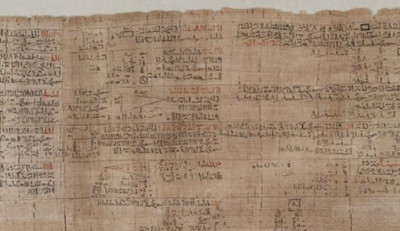For me, the most remarkable thing about this papyrus is how close it lets me get to the fascinating quirky details of aspects of daily life under the pharaohs, not least culinary.
对我而言,纸草书最有价值的一点是让我们能够近距离观察法老治下古怪的日常生活细节,尤其是饮食方面。我们了解到,如果你用“填鸭”的方式养鹅,需要的粮食是自然散养的五倍。
So did the Egyptians really eat foie gras?
埃及人难道也吃鹅肝?
From the papyrus, you can learn that if you force-feed a goose, it needs five times as much grain as a free-range goose will eat.
你可以从纸草书中了解到,如果你喂养一只鹅,它是自由放养的鹅所吃谷物的5倍。
But Ancient Egypt also seems to have had battery-farming, because we're told that geese kept in a coop-and so presumably unable to move-will need only a quarter of the food consumed by their free-range counterparts, and so would be much cheaper to fatten for market.
同时, 他们似乎也圈养,因为纸上提到养在笼里的鹅所需的食物是散养的四分之一,因此如果都用于贩卖,笼养鹅的价格要低得多。
Whether there were also champions of animal rights in Ancient Egypt at this date we just don't know.
而在那个年代的古埃及是否也存在动物权利,我们并不知晓。
But in between the beer and the bread, and the hypothetical foie gras, you can see the logistical infrastructure of an enduring and powerful state, able to mobilise vast human and economic resources for public works and military campaigns.
在啤酒、面包和我们假想的鹅肝之间,能够勾勒出一个强大持久的国家的后勤保障结构,它能够自由调动广大的劳动力资源与经济资源,来进行公共与军事建设。
The Egypt of the pharaohs was, to its contemporaries, a land of superlatives-astonishing visitors from all over the Middle East by the colossal scale of its buildings and sculptures, as it still does us today.
在那个时代,法老的埃及是世界上最强盛的国家。来自中东各地的访客与如今的游客一样,都对这里规模巨大的建筑与雕像啧啧称奇。
Like all successful states, then as now, it needed people who could do the maths.
每一个成功的国家,不管是过去还是现在,都需要数学人才。
And if you're still counting the cats, and the mice, and the ears of grain in the puzzle that I began with, the answer is, of course...19,607.
可能你还在思考本节开始时出的那道猫、老鼠和玉米的问题。答案是:一万九千六百零七。



